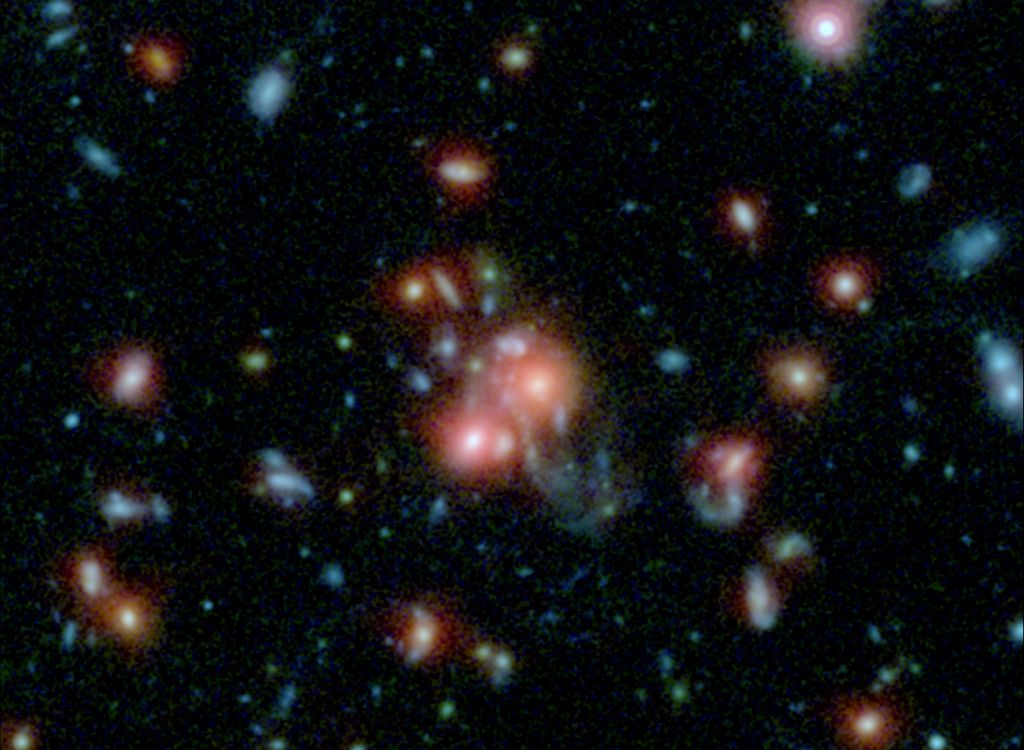

A large cluster of high-mass galaxies, collectively known as SpARCS 1049+56, can be seen in a new image from NASA. Captured using the firepower of Hubble and Spitzer, this multi-wavelength composite paints the cluster’s features in optical and infrared light.
All of the galaxies in the cluster are anchored by the largest and most massive member, which is located near the center of the frame (in red). They move around each other like bees and a hive, though their interactions prove important in dictating the features we see here.
Most significant are those astronomers call “beads on a string.” Simply put, these knot-like features are regions where gas clumped, collapsed and ultimately triggered the formation of new stars. Such activity is normal when multiple galaxies live in close proximity to one another, but the beads on a string phenomenon—or the mechanism behind it—is rare.
The takeaway is that galaxies within the center of clusters can fatten themselves up by stealing material from nearby companions, just as colliding galaxies often do. Only, the star formation activity doesn’t necessarily take place within the galaxy, but outside of it.
Astonishingly, the cluster, which is believed to be 9.8 billion light-years from Earth, appears to be churning out new stars at a fervent rate. Astronomers estimate that, each year, 800 stars weighing as much as the Sun take shape. In contrast, our galaxy produces stars 800 times slower.
If you think that’s impressive, note that it weighs over 400 trillion Suns.
More from Keck Observatory:
“Beads on a string” is a telltale sign of something known as a wet merger, which occurs when at least one galaxy in a collision between galaxies is gas rich, and this gas is converted quickly into new stars. The large amount of star formation and the “beads on a string” feature in the core of SpARCS 1049+56 are likely the result of the brightest cluster galaxy in the process of gobbling up a gas-rich spiral galaxy.
What is particularly interesting is that brightest cluster galaxies closer to the Milky Way are thought to grow by so-called dry mergers, collisions between gas-poor galaxies that do not result in the formation of new stars. The new discovery is one of the only known cases of a wet merger at the core of a galaxy cluster, and the most distant example ever found.
[Reference: “Prodigious ‘Brightest Cluster Galaxy’ Discovered Churning Trillions of Stars“]